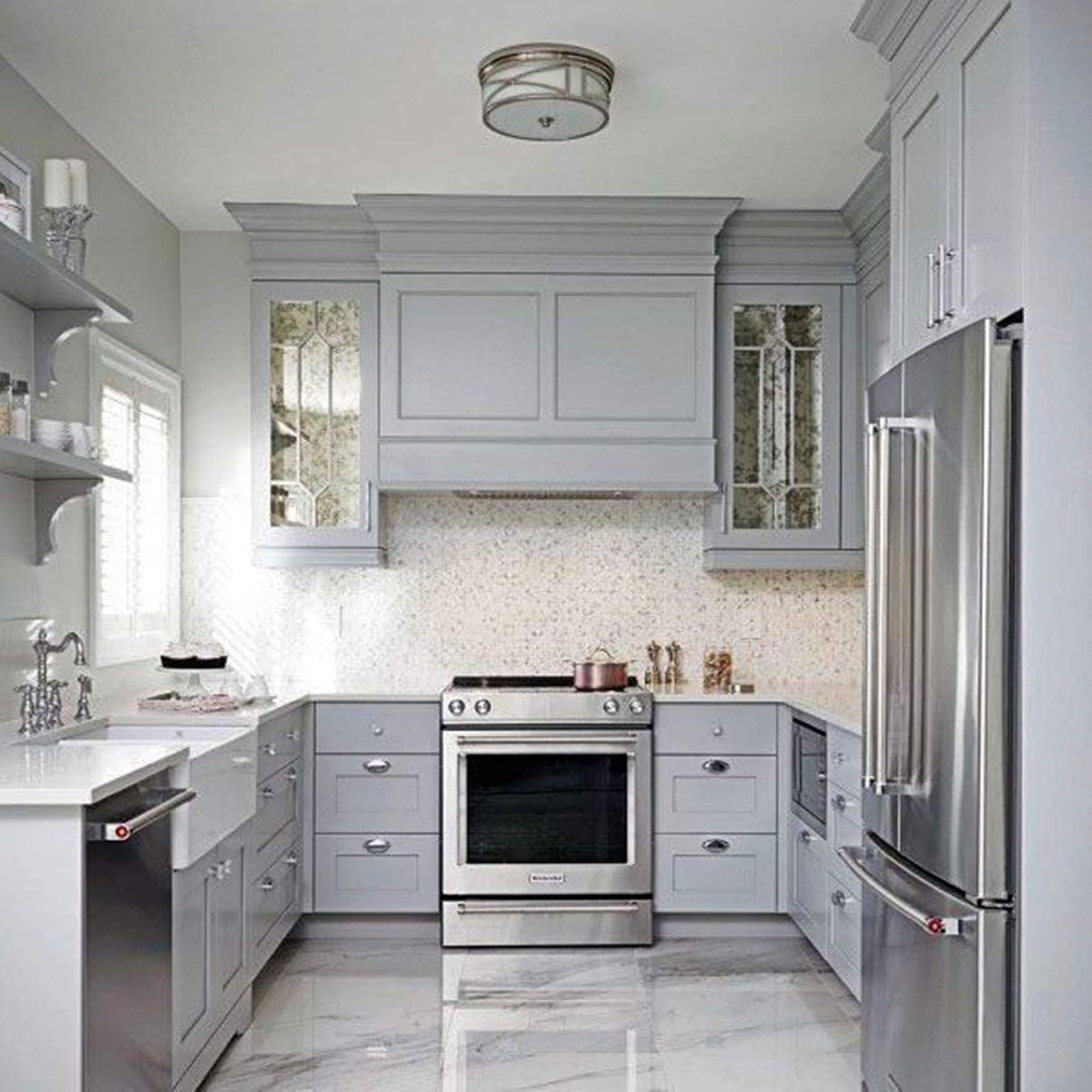Design Considerations for Light Gray and White Kitchens: Light Gray And White Kitchen Cabinets

Light gray and white kitchens offer a timeless and elegant aesthetic. The combination provides a clean and airy feel, making the space appear larger and more inviting. However, achieving a balanced and stylish design requires careful consideration of various factors.
Choosing the Right Shade of Gray
Selecting the right shade of gray is crucial to complementing the white cabinets. The chosen gray should harmonize with the white, creating a cohesive and visually appealing palette. Consider the following:
* Undertones: Gray shades can have warm (yellowish), cool (blueish), or neutral undertones. Warm grays tend to create a cozy and inviting atmosphere, while cool grays offer a more modern and sophisticated feel. Neutral grays provide a balanced and versatile backdrop.
* Light or Dark: Lighter grays can make the kitchen feel spacious and airy, while darker grays add depth and drama. Choose a shade that complements the overall lighting and size of the kitchen.
* Existing Decor: Consider the existing decor and furnishings in the kitchen when choosing a gray shade. For example, if the kitchen has warm wood flooring, a warm gray would complement the existing elements.
Balancing Light and Dark Elements, Light gray and white kitchen cabinets
A well-designed kitchen should strike a balance between light and dark elements. Too much white can create a sterile feel, while too much gray can make the space feel gloomy.
* Light Elements: White cabinets, countertops, and backsplash contribute to the overall brightness of the kitchen.
* Dark Elements: Consider incorporating dark elements such as a dark wood floor, black hardware, or dark accent walls to add contrast and depth.
Incorporating Accent Colors and Materials
Accent colors and materials can add personality and visual interest to a light gray and white kitchen.
* Accent Colors: Introduce pops of color through accessories, artwork, or even painted cabinetry. Consider vibrant hues like blue, green, or yellow to complement the neutral palette.
* Materials: Incorporate natural materials such as wood, stone, or metal to add texture and warmth. For example, a wooden island or a stone backsplash can create a visually appealing contrast.
